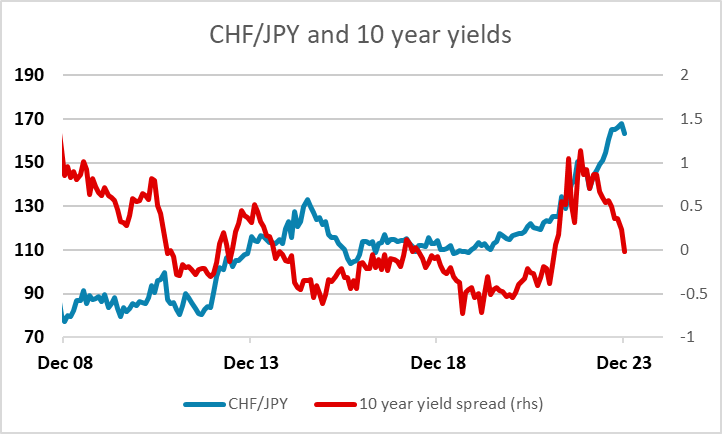FX Daily Strategy: Europe, December 15th

PMIs the focus on Friday
European currencies need strong PMIs to sustain Thursday gains
GBP/USD may be due a recovery as risk premium declines
JPY strength may switch to crosses
PMIs the focus on Friday
European currencies need strong PMIs to sustain Thursday gains
GBP/USD may be due a recovery as risk premium declines
JPY strength may switch to crosses
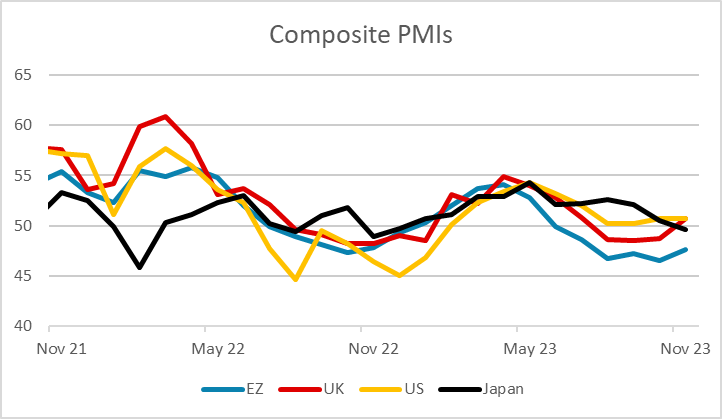
December preliminary S&P PMIs will be the main data on Friday, with the European numbers as usual gaining the most attention. The November data were seen as mildly encouraging for Europe, and particularly for the UK, which saw the composite PMI move above 50 for the first time since July. But the Eurozone data is really just bumping along the bottom in recent months, and the modest November recovery needs something more convincing in December if it is to be taken seriously as a sign that the economy is bottoming out. Similarly, the recovery in the UK in November will only be significant if it is maintained in December.
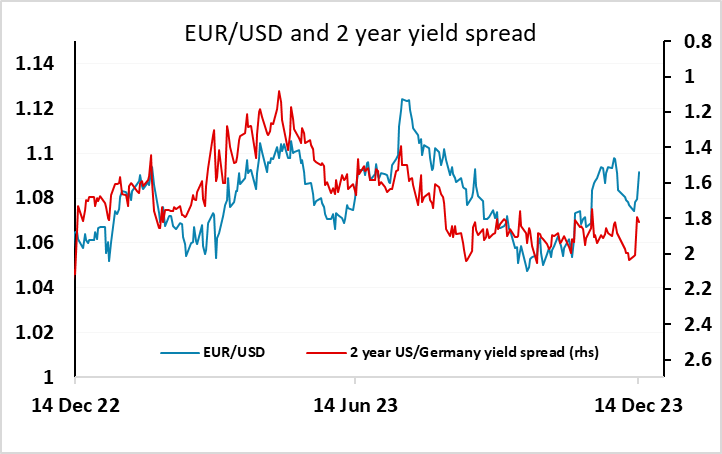
Thursday saw strong performances from both the EUR and GBP after the ECB and BoE meetings, with both statements playing down the scope for rate cuts in 2024. For the ECB, the staff forecasts still had inflation above 2% in 2025, and Lagarde noted that the forecasts were based on interest rates above current levels. Three of the nine UK MPC members still voted for another rate hike, so while rate expectations in Europe are still below where they were before the FOMC meeting, the EUR and GBP got a boost from the hawkish tone of the central banks relative to the Fed. Strong PMIs would likely extend the EUR and GBP gains on Friday, supporting the more hawkish stances, but weaker data would throw doubt on the credibility of their hawkish policy stances.
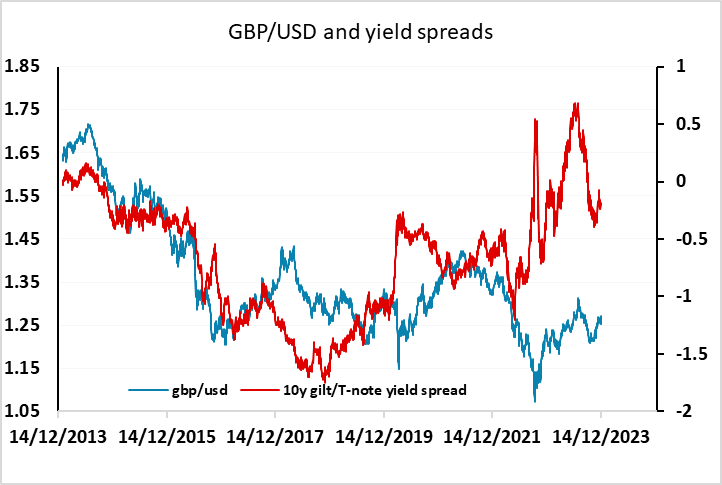
EUR/USD gains look a little extended relative to short term rate spreads, so it will likely require clearly strong PMIs to sustain levels close to 1.10. For the UK, the picture is less clear-cut. Although short term rate spreads have been well correlated with EUR/GBP over the last year, EUR/GBP still looks high relative to longer term correlations with yield spreads, and GBP/USD looks clearly too low. There may still be some risk premium in GBP reflecting uncertainty about the fiscal and political outlook, as the break with historical yield spreads coincided with the brief Truss administration. But if the strong November UK PMIs are sustained, there is a case for any risk premium to be eroded and GBP/USD to make gains towards 1.30.
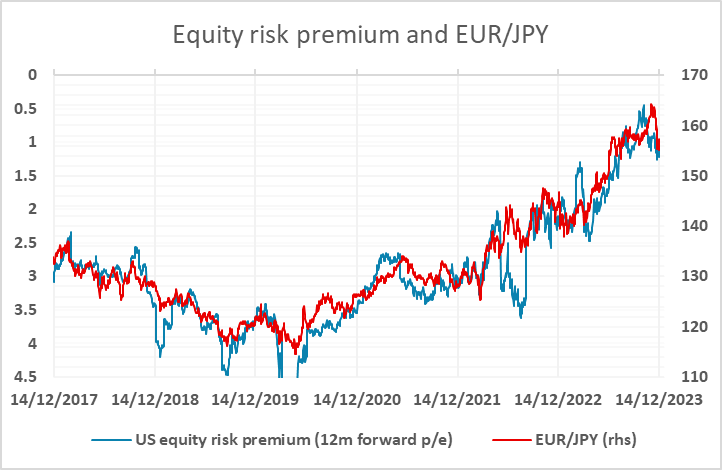
The sharp JPY gains seen after the FOMC faded slightly through the day on Thursday, and the gains against the USD have taken USD/JPY close to the levels consistent with the recent USD/JPY correlation with yield spreads. However, we would still argue that JPY gains are likely to exceed the implications of this correlation longer term, as the real USD/JPY rise has been around 13% larger than the nominal rise since the beginning of 2021. Nevertheless, form here the next phase of JPY gains may require some weakening of risk sentiment. We have already seen some of this on Thursday, with European equities not taking kindly to the hawkish ECB tone, and this suggests to us that JPY crosses may now be more vulnerable than USD/JPY. CHF/JPY, where the nominal moves are very similar to the real moves, remains the most obvious value for JPY bulls.
